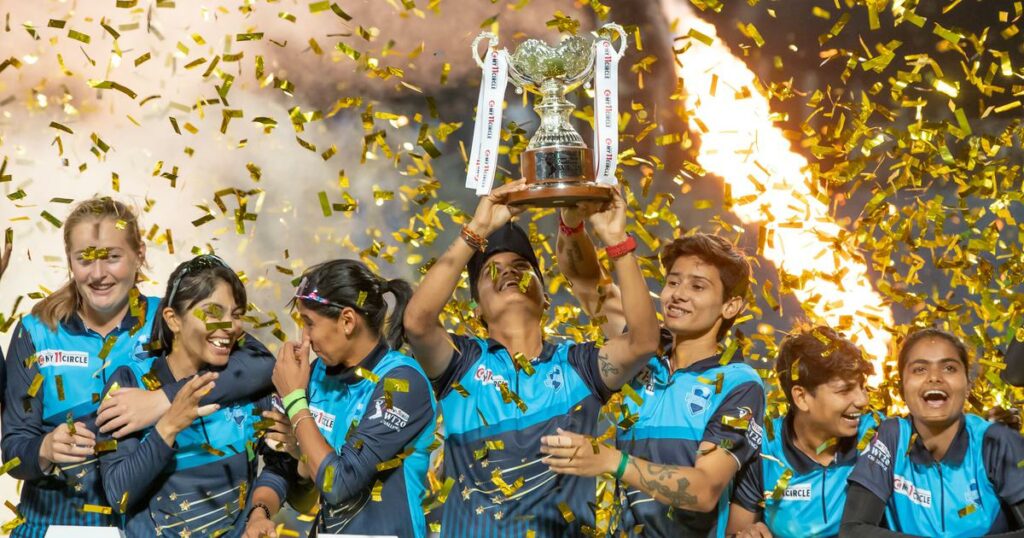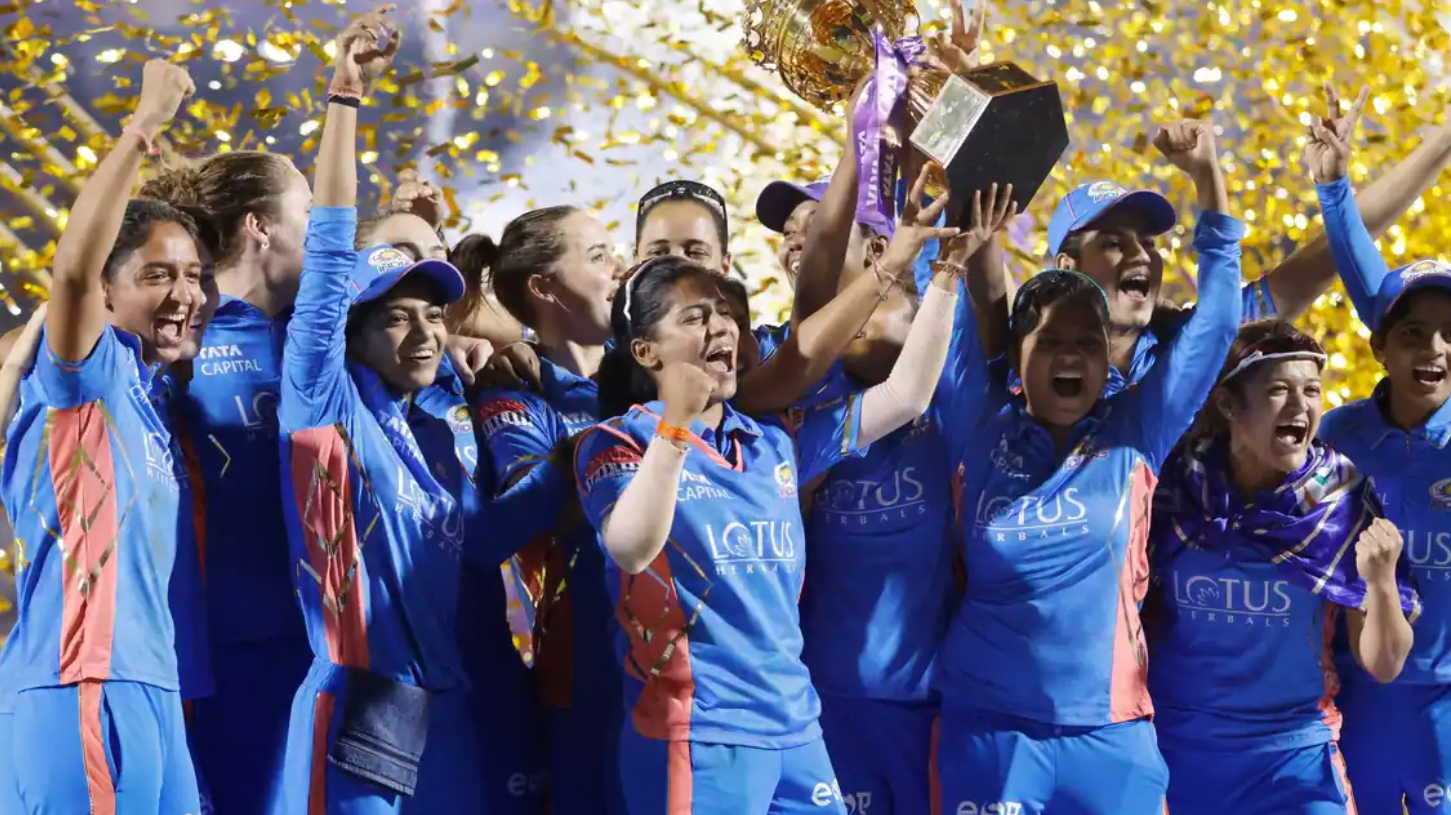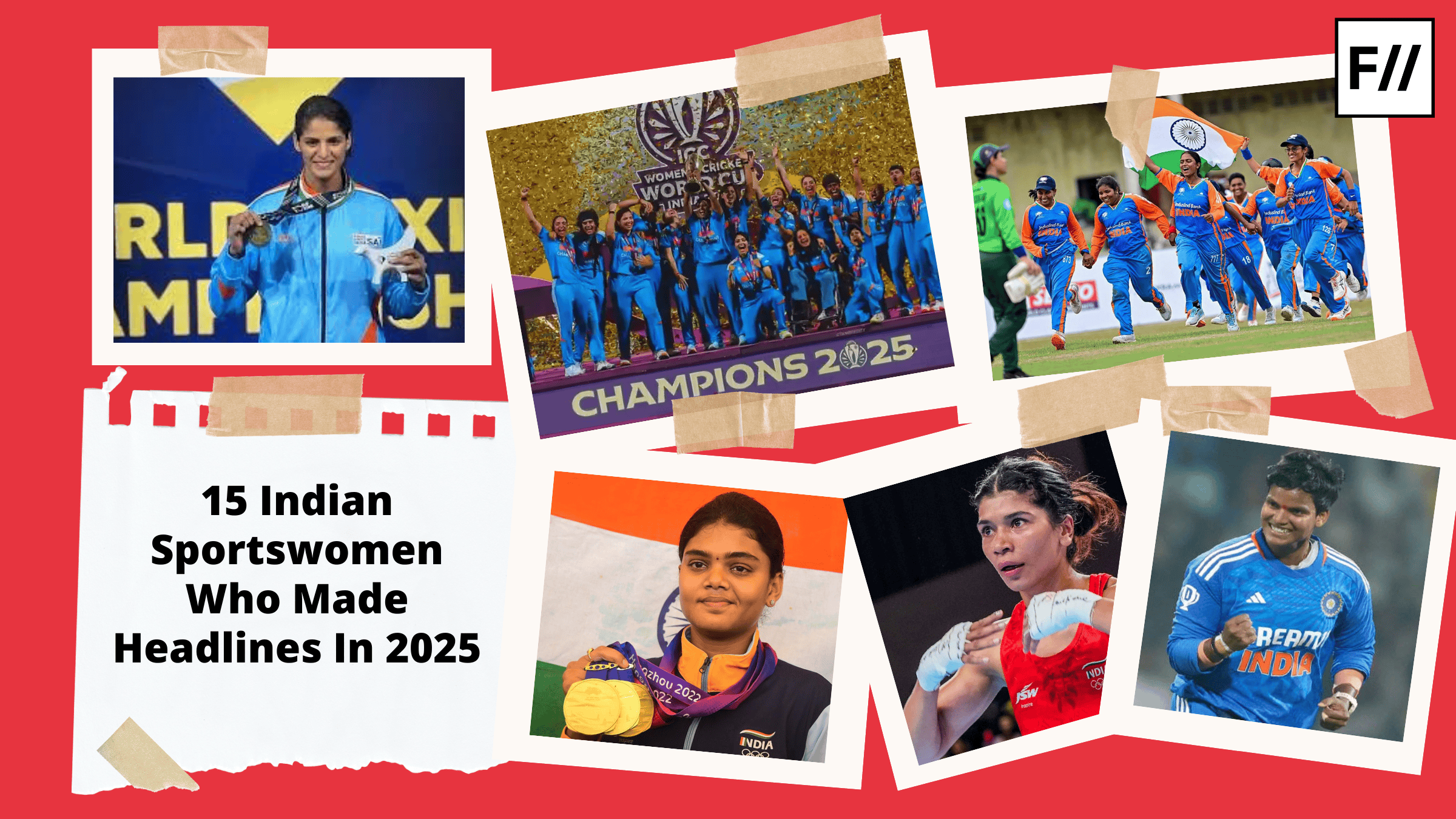The advent of the Women’s Premier League (WPL) led to a new era for the Indian women’s cricket team where female cricketers are not neglected and side-lined as a second gender. The historic decision of equal prize money for women and men in global events conducted by the International Cricket Council(ICC), and the momentous decision of the Board of Control for Cricket in India(BCCI) to implement the pay equity policy, mandates equal match fees for female players as their male counterparts.
Gender parity with the emergence of WPL
The inaugural season of the Women’s Premier League (WPL) tournament, the women’s version of the Indian Premier League (IPL) — an initiative taken by the BCCI to bring women’s cricket to the mainstream expatiate, held in March 2023 saw the Mumbai Indians led by Harmanpreet Kaur as the winners proving their prowess like their male counterparts who have in their name five IPL trophies.

The inaugural teams of WPL consisted of the Delhi Capitals, Gujarat Giants, Royal Challengers Bangalore, Mumbai Indians, and UP Warriorz. This resulted from the continued improvement in the Indian Women’s Cricket team.
The league was launched to professionalise women’s cricket and to bridge the gap between international players such as from Australia, and England who presently dominate women’s cricket in the global arena. When compared, WPL in its initial stage is yet to reach its counterpart in terms of market sponsorship and broadcast rights. The franchise rights sale and the auction of the players raised Rs. 4,669 crore and the media rights Rs 951 crore for the five seasons were acquired by Viacom18 media, which is just a fraction of the IPL broadcasting rights which is around 48,000 crore for five years.
According to the Financial Express “market leaders say it’s a good start,” given the commercial revenue opportunities including the sponsorship money and the ticket sale.
In an interview with The Quint, Harmanpreet Kaur, the captain of Mumbai Indians expresses how the WPL stands as an imperative move for the domestic players, “The WPL is something we all wanted to start because it was so important for the young players, for the domestic players as they can also now play more and get some more money, some security in their life because that is also very important because when money was not involved, security was not there.”
The advantage the women’s team will benefit from through this launch would be to raise the standard of the Women’s cricket team. For domestic players, the league allows them to play against overseas players which helps them gain an understanding of International cricket. To cut the gap between domestic and international players and for the betterment of the performance of the domestic players.
Efforts were made to increase the marketing and viewership of WPL. It also creates a new revenue stream for the players, providing a platform for young women to take up sports. These are certain benefits that are expected to be achieved by the women’s team, the benefits and exposure that the men’s cricket team has been receiving since the launch of IPL 15 years ahead of the launch of WPL.
Cut to 2024 the performance of the women’s Cricket team has not enhanced as anticipated with WPL’s launch. India witnessed an unsatisfactory performance in the white ball series after two consecutive Test wins against Australia and England. Followed by the 9-wicket win in the first T20I against World Champions Australia.
Equal prize money for global events
In its historic decision, ICC in July 2023 announced equal prize money for both men and women in its global events to initiate pay parity in sports, a massive move for gender equality. ICC has been increasing the prize money since 2017 to focus on equal prize money to bring gender equality according to the ICC Chair Greg Barclay. The winners and runners-up of the ICC Women’s T20 World Cup received five times the award prize that they received in 2018 which is 1 million dollars and 500,000 dollars respectively.
The ICC announced its commitment to fulfil prize money equity by 2030 ahead of its schedule, a decision taken by the board at the ICC Annual Conference, in Durban, South Africa. This was a momentous decision that helped shatter the historic discrimination against women cricketers and escalate them to equal recognition to that of their male counterparts.
‘Pay Equity Policy’ of the BCCI
October 27, 2022, witnessed the historic move of the BCCI which implemented the pay equity policy, which facilitated same match fees removing the pay disparity for centrally contracted female cricketers to that of their male counterparts in the 15th BCCI Apex Council. Jay Shah, BCCI secretary mentioned in his tweet that this was an initial effort to combat discrimination.
The revised pay structure meant the same match fee for women and men cricketers, Rs 15 lakh for Test Match, 6 lakh for One Day International (ODI), and 3 lakhs for T20I. Earlier, the pay was as follows, Rs 2.5 lakhs, Rs 1 lakh, Rs 1 lakh for Test Match, ODI, and T20I respectively. This landmark decision led India to become the second country to have introduced pay parity, second only to New Zealand. This decision was lauded by former Indian Cricketers such as Sachin Tendulkar and Harbhajan Singh.
Even though the annual retainers for grade A women cricketers had seen an upsurge in 2018 when compared to 2016, 50 lakhs and 15 lakhs respectively. It still remains to be a fraction of what their male counterparts receive. Where the highest-grade female cricketers are allocated an annual retainer of Rs 50 lakhs, the lowest-grade male cricketer receives around double the retainer, which is Rs 1 crore.
The annual retainer pay disparity is a concern that arises in light of the difference between the number of matches that would be played by the men’s and women’s teams in the upcoming years. Between the years 2023 and 2027, the men’s team has a total of 141 matches whereas the women’s team has only 75 matches between the years 2022 and 2025.

When the movement for equal pay in the match fee for male and female teams arose, it faced commendation as well as criticism from the cricket fraternity itself. Smriti Mandhana, being critical of the need for equal pay for women and men, had opposed the need for an equal paycheque. She was lauded as well as criticised for her statement. Her stand on the movement was that the revenue generated by women’s cricket is not equivalent to that of their male counterparts and when it becomes equivalent she will vouch for the pay parity.
The counter-argument to this would be to note the historic under-representation of women’s cricket in the country and across the globe where pay parity would just not mean equal pay to the teams but also a resistance to the historic social discrimination of women in the arena of sports.
Pay parity brings changes at the grassroots level, as the major concern for domestic female cricketers was the drain of family resources and unequal pay which can be eased with equal match fees even though the gap between annual retainers received by male and female players still remains huge. In a survey conducted by An Equal Hue, 84.5 per cent of the respondents felt that the revenue received by the domestic cricketers was not enough as a primary income. Eventually, players drift apart from taking up cricket as a viable career opportunity.
The gender neutral batter
The conscious decision to change the term ‘batsman‘ to ‘batter‘ in the sport by the Marylebone Cricket Club (MCC) as an initiative taken towards gender equality was introduced in 2021 and also reflected and incorporated a month later by the ICC which had been utilising the term ‘batter‘ instead of batsman in commentaries as well as across channels keeping in mind the need for gender-neutral terms.

“Of course, language changes alone will not grow the sport, we must ensure that girls and boys who are inspired to play cricket have a fantastic, fun first experience and are both able to progress as cricketers without barriers.” states the then-acting CEO of ICC Geof Allardice.
“Whatever little changes have happened, we are really happy about them and we are very positive about that. After some time, they will think about this [pay parity for annual retainers] thing because everyone is putting in equal efforts, equal hard work,” Harmanpreet Kaur said in her interview with The Quint.
Breaking through the conventions of gender roles and gender narratives even Cadbury recreated its iconic cricket ad of the 90s in 2021, a man on the pitch to a woman on the pitch cheered by her male friend which was a narrative as a tribute to the Indian women’s cricket team.
Although the policies implemented by the BCCI with regard to pay parity through equal pay for same matches for men and women, the launch of WPL and an attempt to popularize it in an unprecedented degree in terms of women’s sports in the country or the ICC’s equal prize money for global events to evade the gender inequality from the historically discriminatory system, the gender disparity has not ceased to exist.
Implementation of progressive policies to transform such a system that has been sidelining females as a second gender or subordinate to that of their male counterparts in the respective sport, to initiate a more inclusive space for women in sports that does not require them to gravitate for other occupations because of lack of security in cricket as a viable career for them.
Even though the disparities between the teams remain, this historic decision of equal pay can be seen as a first step towards more gender-equal and gender-inclusive space in cricket. For many women players who remain backstage due to the lesser pay, this step can be a path towards their dream of playing for bigger names in the world of cricket. Steps like these make the fight for gender equality worth it.
About the author(s)
Hrithika Haridas (she/her) is a final year MA Communication (Media Practice) student at the University of Hyderabad. She tries to look at things through the political, gender, class, and caste lens unlearning and relearning conventional normatives pushed on to us. She wants to be an inclusive content creator, inclusive of caste, class and gender minorities.





